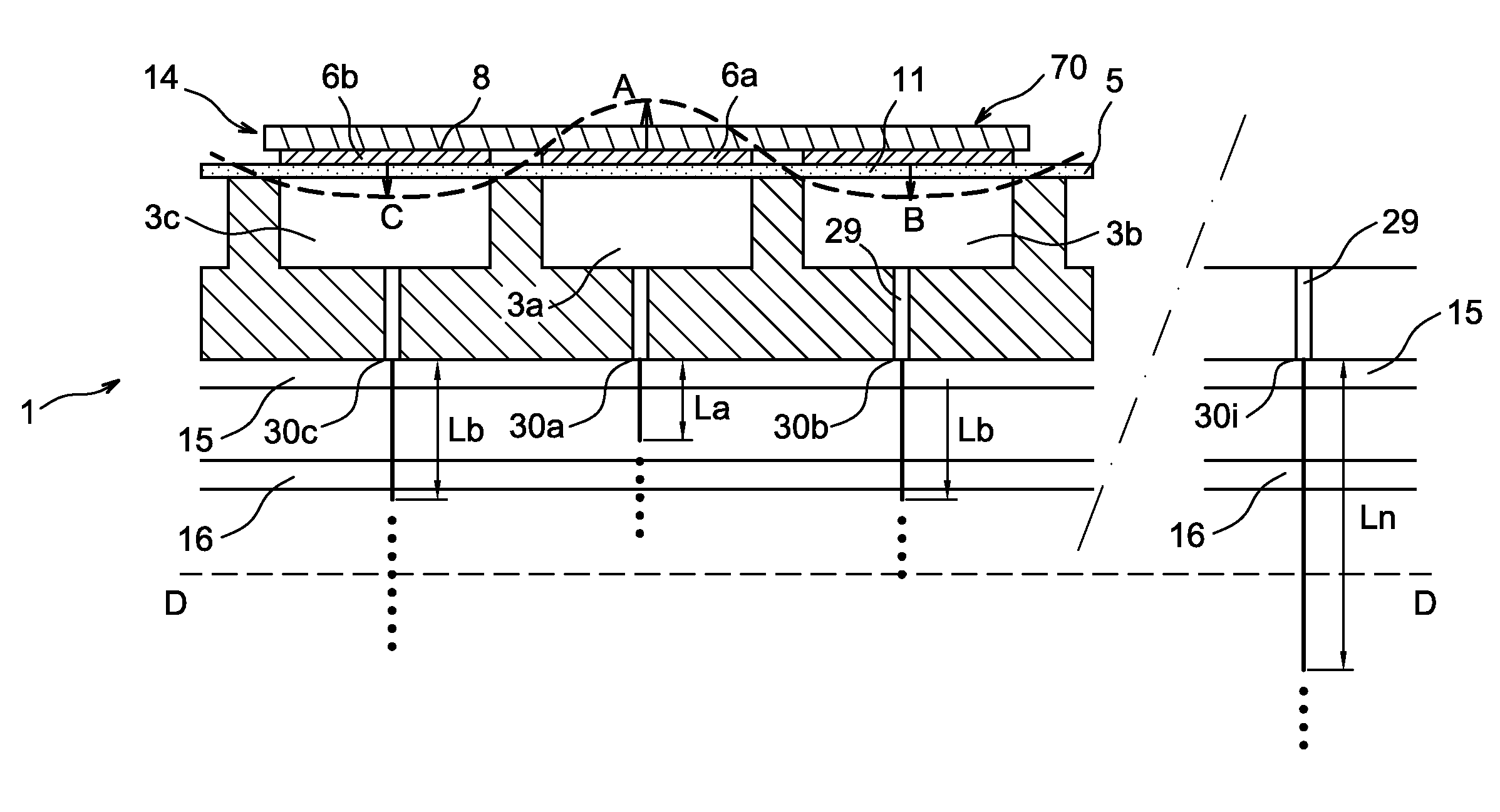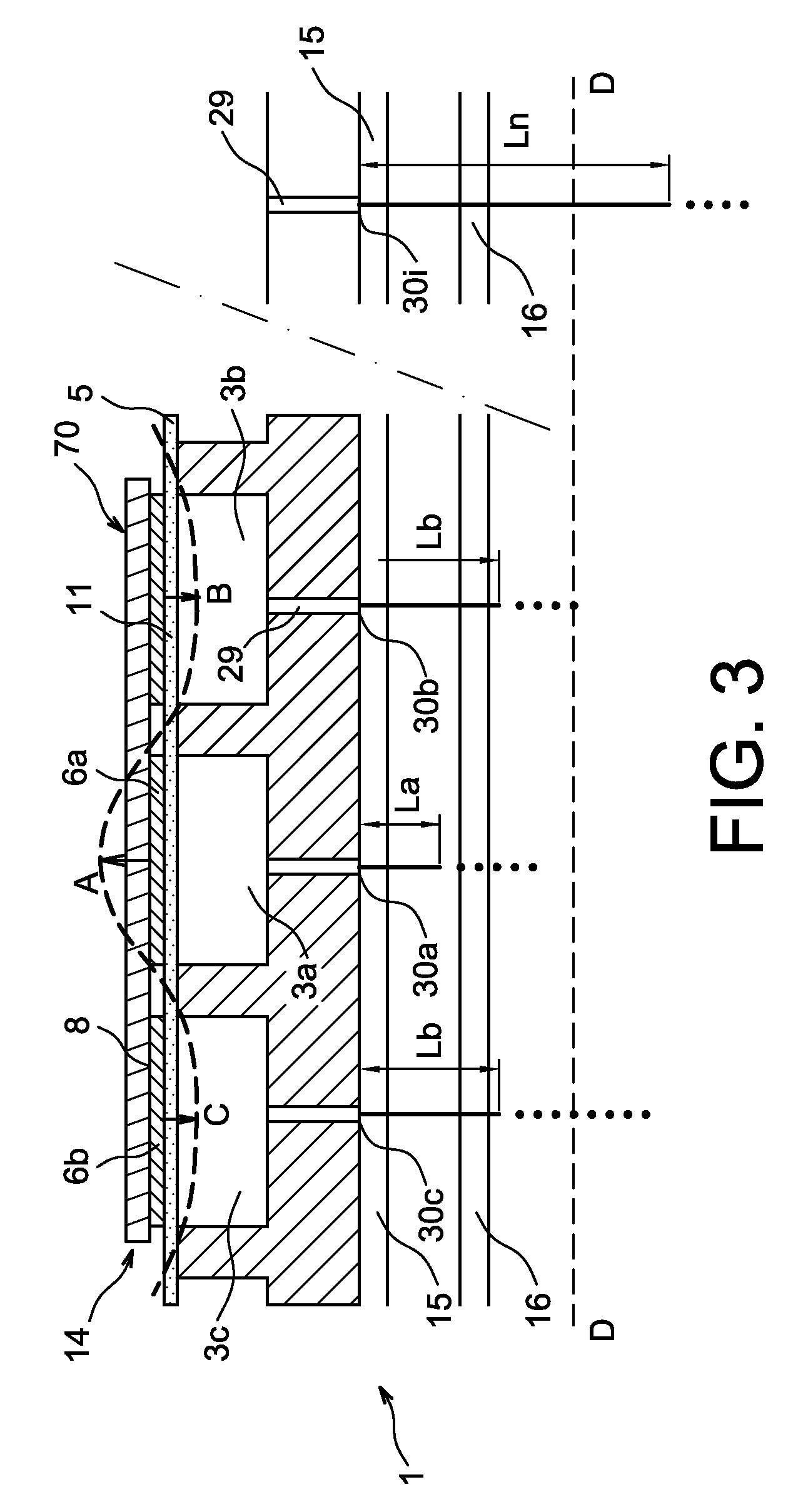Continuous ink-jet printing device, with improved print quality and autonomy
a technology of inkjet printing and continuous ink, which is applied in the direction of printing, etc., can solve the problems of printing errors, printing defects, and electrical crosstalk between these circuits
- Summary
- Abstract
- Description
- Claims
- Application Information
AI Technical Summary
Benefits of technology
Problems solved by technology
Method used
Image
Examples
second embodiment
[0101]In an alternative embodiment to those modes shown in FIGS. 6, 8 and 9 the circuit 19 has the form represented in FIG. 7. In this alternative mode the printer is equipped, for example at the device for processing the data to be printed 7, with means for producing and sending stimulation and compensation pulses to the chambers adjacent to the stimulated chamber. Thus, as shown in FIG. 7, simultaneous with sending a stimulation pulse to, for example, actuator 6 supplied by line 92, the device 7 sends to each of the actuators 6 of adjacent chambers supplied by lines 91 and 93, a reduced pulse for compensating for crosstalk. The means for sending pulses may be line coupling components such as those described in connection with FIG. 6, or those which are to be described in connection with FIGS. 8 and 9, but applied to parts of line 9 which are found upstream of the print head, for example, inside the device for processing of the data to be printed 7. It may also involve software mea...
third embodiment
[0103]In a third embodiment, represented in FIG. 9, the lines 9 of actuators of adjacent chambers are coupled two at a time by an assembly of Zener diodes 21, 22 in parallel and have opposite passing directions. Thus when one of the lines receives a pulse, the other receives it but with amplitude which peaks at the diode voltage limit value. Naturally this limiting value is selected so that the V′ / V ratio thus obtained is suitable.
[0104]The graph shown in FIG. 10 represents the variation of the V′ / V ratio as a function of the number of dots per inch (DPI) for a printer which has a diaphragm 5 made of steel with a thickness of 50 μm. The first line of the abscissa axis shows the number of dots per inch and the second line shows the value of the corresponding gap between consecutive nozzles, that is, the approximate value of 25400 μm divided by the number of dots per inch. It can be seen that the ratio V′ / V increases with the number of DPI. The inventors consider it reasonable to envi...
PUM
 Login to View More
Login to View More Abstract
Description
Claims
Application Information
 Login to View More
Login to View More - R&D
- Intellectual Property
- Life Sciences
- Materials
- Tech Scout
- Unparalleled Data Quality
- Higher Quality Content
- 60% Fewer Hallucinations
Browse by: Latest US Patents, China's latest patents, Technical Efficacy Thesaurus, Application Domain, Technology Topic, Popular Technical Reports.
© 2025 PatSnap. All rights reserved.Legal|Privacy policy|Modern Slavery Act Transparency Statement|Sitemap|About US| Contact US: help@patsnap.com



